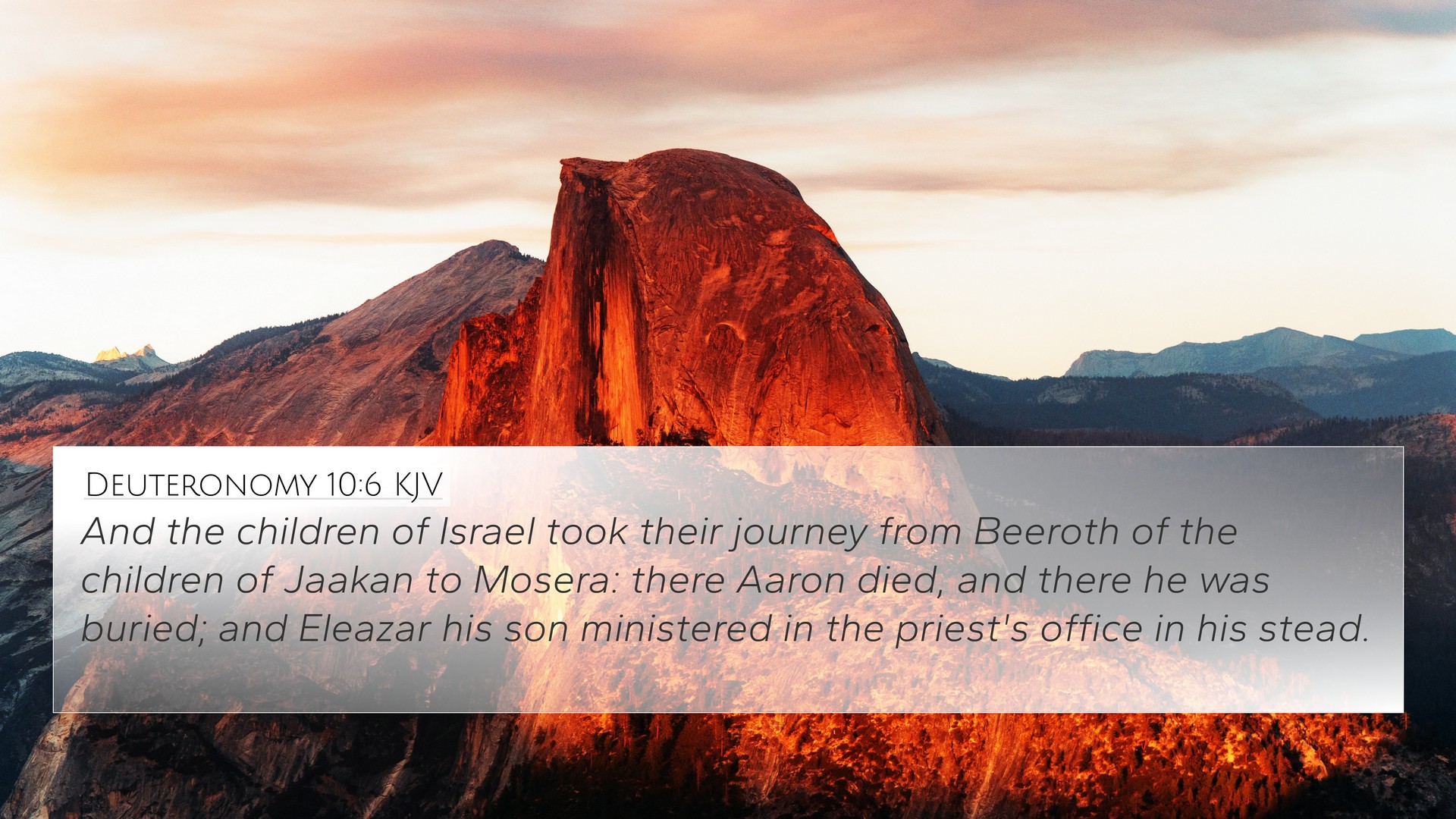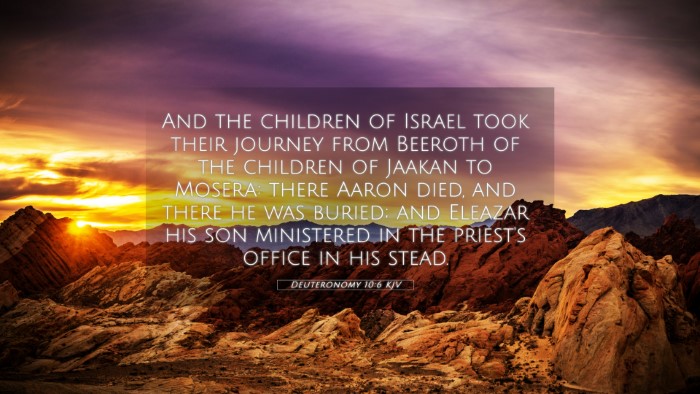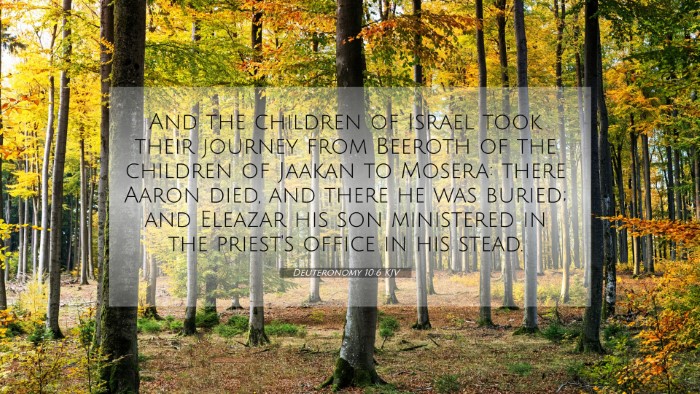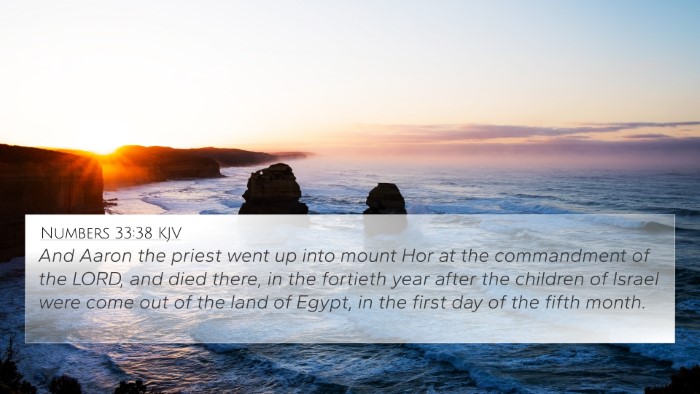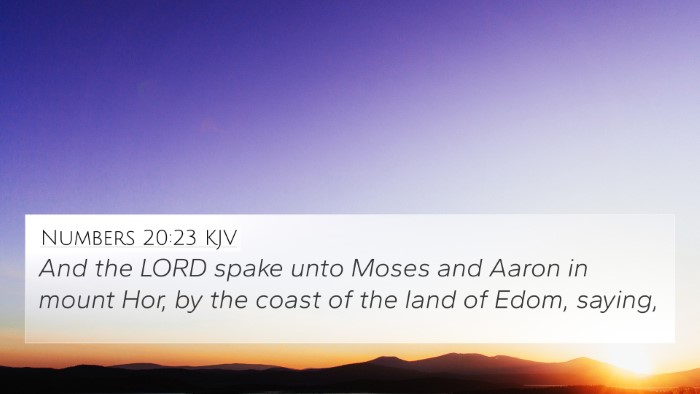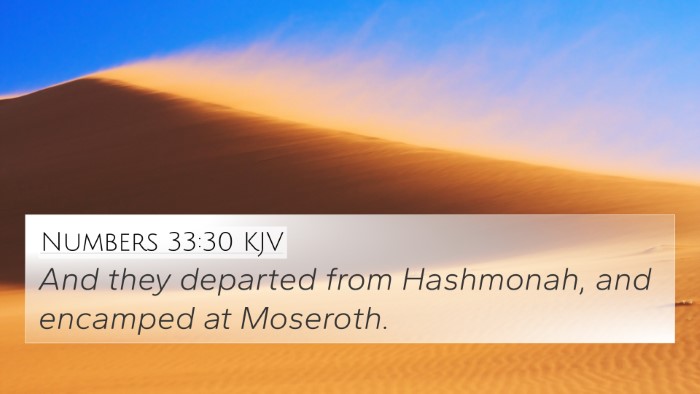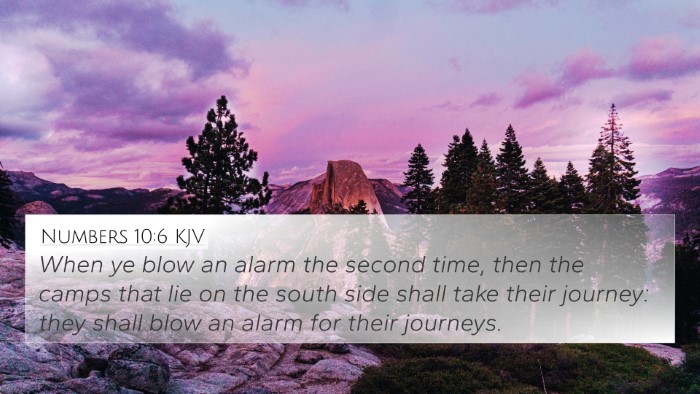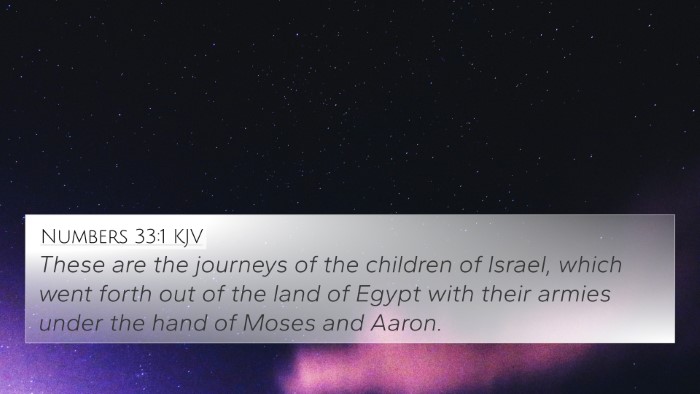Understanding Deuteronomy 10:6
Deuteronomy 10:6 states:
"Now the children of Israel were encamped in the plains of Moab, across the Jordan from Jericho, and the Lord spoke to Moses saying..."
This verse continues to outline the significance of God's covenant with His people, the Israelites, and sets the stage for the reiteration of His laws and their obligations.
Key Themes in Deuteronomy 10:6
- Covenant Relationship: This verse emphasizes the relationship between God and Israel, highlighting God's faithfulness and the Israelites' obligation to obey Him.
- God's Sovereignty: The context of the scripture reflects God's control over history and events, guiding His people.
- The Chosen People: It underlines the unique status of Israel as God's chosen nation, a theme recurring throughout the Scriptures.
Commentary Insights
Commentaries by scholars such as Matthew Henry, Albert Barnes, and Adam Clarke shed light on various aspects of this verse:
- Matthew Henry: Focuses on God's grace and mercy, stressing that Israel's identity stems from divine choice. Henry also points out the significance of obedience as a response to God's love.
- Albert Barnes: Highlights the historical context, explaining how this moment marks a pivotal point in Israel's journey. He illustrates how this passage serves as a reminder of their covenant and duties.
- Adam Clarke: Elaborates on the geographical significance of Moab, symbolizing both a physical and spiritual transition for the Israelites as they prepare to enter the Promised Land.
Cross-References Related to Deuteronomy 10:6
Below are important Bible verses that relate to Deuteronomy 10:6, which enhance the understanding of this passage through thematic connections:
- Exodus 19:5-6: God declares Israel as His treasured possession, foreshadowing their covenant relationship.
- Deuteronomy 7:6: Emphasizes Israel's unique status as a holy people set apart by God.
- Jeremiah 31:31: Foreshadows the new covenant, relating to the principles of God's commitment to His people.
- Romans 9:4-5: Paul reflects on Israel's privileges and their calling as a chosen nation.
- 1 Peter 2:9: The New Testament reference that aligns with Israel's identity as a chosen people extends to all believers.
- Hebrews 8:8: This verse connects to the idea of covenant, about how God relates with His people throughout history.
- Isaiah 43:20-21: Describes Israel as a people formed for God’s glory, reinforcing their purpose in God’s plan.
Connections to Other Scriptures
This verse sets the foundation for connections not only to the Old Testament teachings but also to the New Testament interpretations:
- Thematic Bible Connections: The theme of covenant is prominent in both Testaments, emphasizing God's unwavering commitment to His people.
- Linking Bible Scriptures: Cross-referencing Old Testament promises with New Testament fulfillments illustrates the continuity of God's plan through Jesus Christ.
- Comparative Bible Verse Analysis: Comparing this verse with others like Matthew 5:17, where Jesus states He came to fulfill the Law strengthens understanding of their roles in God's narrative.
Tools for Cross-Referencing
To delve deeper into these connections, one can utilize a variety of tools:
- Bible Concordance: A reference book that enables individuals to find terms and topics related to Bible verses.
- Cross-Reference Bible Study: Engaging in systematic study of verse relationships provides profound insights and clearer understanding of Scripture.
- Bible Cross-reference Guide: Guides that list verses related thematically and doctrinally facilitate study and understanding.
- Bible Chain References: These resources allow readers to follow concepts through Scripture, illustrating God's consistent message across different books.
Final Thoughts
Understanding Deuteronomy 10:6 requires an appreciation of its context, historical ramifications, and covenantal implications. Through cross-referencing, readers can explore the interconnectedness of God’s word, deepening their comprehension of biblical themes and messages. This method not only enriches personal study but also prepares individuals for teaching and sharing these truths with others.
